Electric Circuit Analysis: Chapter - 3: Basic Circuit Analysis - AC
Average Value
Statement, Formula, Solved Example Problems
Since the alternating quantity is a function of time, it becomes difficult to specify the quantity as so many amperes or volts. One of the ways to represent it is by an average value.
AVERAGE VALUE
Since the alternating quantity is a function of time, it becomes difficult to specify the quantity as so many amperes or volts. One of the ways to represent it is by an average value. Hence, we take the average of the instantaneous values of the wave (voltage or current), over one complete cycle.
To
explain about averaging a waveform, let us consider the time varying current
shown in figure 3.2. Figure 3.2 shows only one complete cycle. If the time
period is divided into a number of equal intervals, N, then the current at each
interval of time is given by i1, i2, i3 ... iN
and the average value is
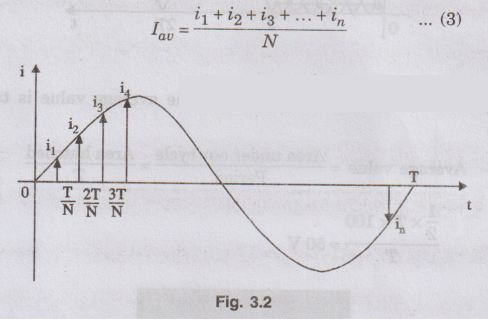
Note
we use small case letters (i, e or v) for instantaneous values and capitals (I,
E or V) for constant values. Equation (3) gives better average value for larger
values of N. A better way to find the average value is to integrate over a
period and find the area under it and divide by T. Hence,

The
average value of an alternating current is that value of steady direct current
which transfers the same charge as the alternating current flowing for the same
time.
For
symmetrical waves, if the integration is done over a complete cycle, the
average value over one full cycle becomes always zero (the positive half is
similar to the negative half and so the two areas cancel each other). Hence for
symmetrical waves, the average value is taken over half a cycle only. For
unsymmetrical waves, the average value is taken over one complete cycle.
EXAMPLE
2:
Find the average value of the triangular wave shown in figure.
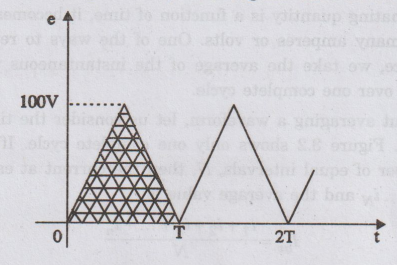
Solution:
This
is an unsymmetrical wave and hence the average value is taken over one complete
cycle.

Average
value = 50 V
EXAMPLE
3:
Find the average value of the sine wave shown in figure.
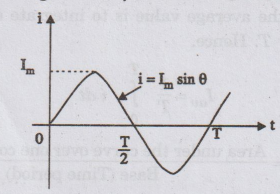
Solution:
This
is a symmetrical wave. Hence, the average value is defined over half a cycle. (i.e.,
from 0 to T/ 2).
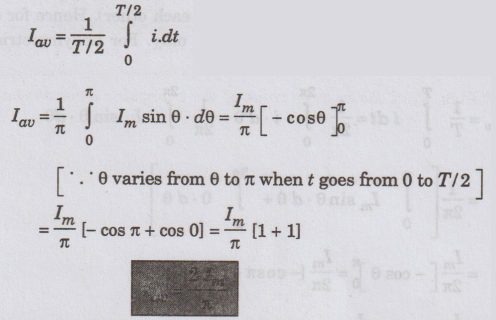
Note:
The x-axis written in terms of time can also be written in terms of angles (in
radians).
Period
= T sec (or) 2π radians
Being
a symmetrical wave, the average value is taken over л radians (T / 2 sec)
EXAMPLE
4:
Find the average value of the (i) full rectified sine wave (figure (a)) (ii)
half rectified sine wave. (figure (b)).
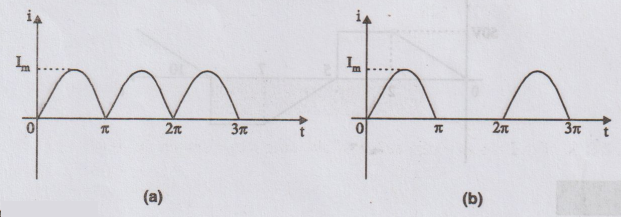
Solution:
(ii) Period is T / 2 sec (2л radians)
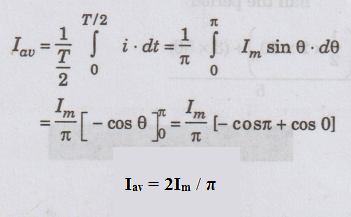
(ii)
Period is T sec (2π radians) as the wave is unsymmetrical.
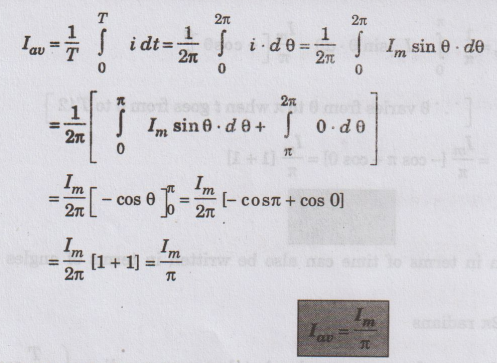
EXAMPLE
5 : Find the average value of the voltage waveform ahown in figure.
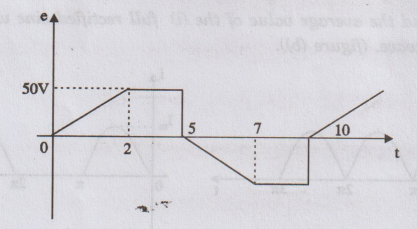
Solution:
Since
this is a symmetrical wave, average value is defined over half cycle.
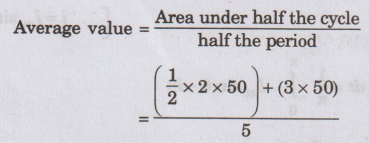
Average
value = 40 Volts
Electric Circuit Analysis: Chapter - 3: Basic Circuit Analysis - AC : Tag: : Statement, Formula, Solved Example Problems - Average Value